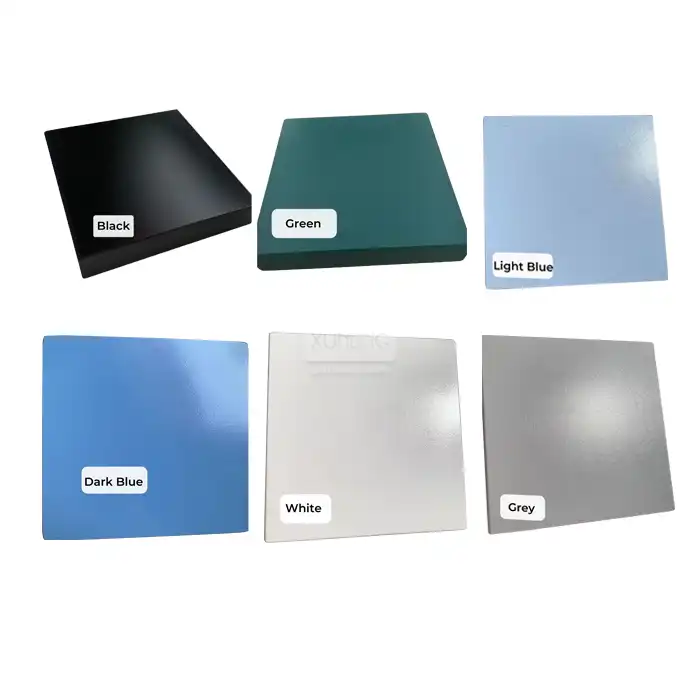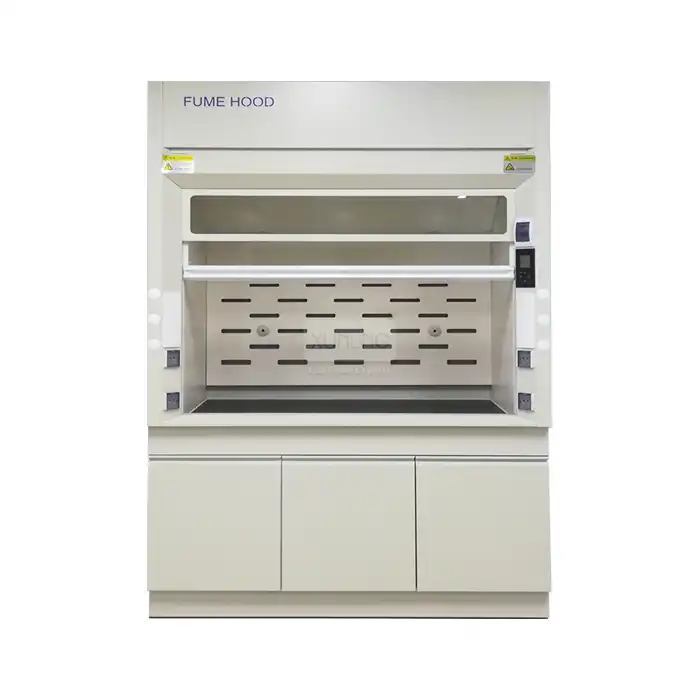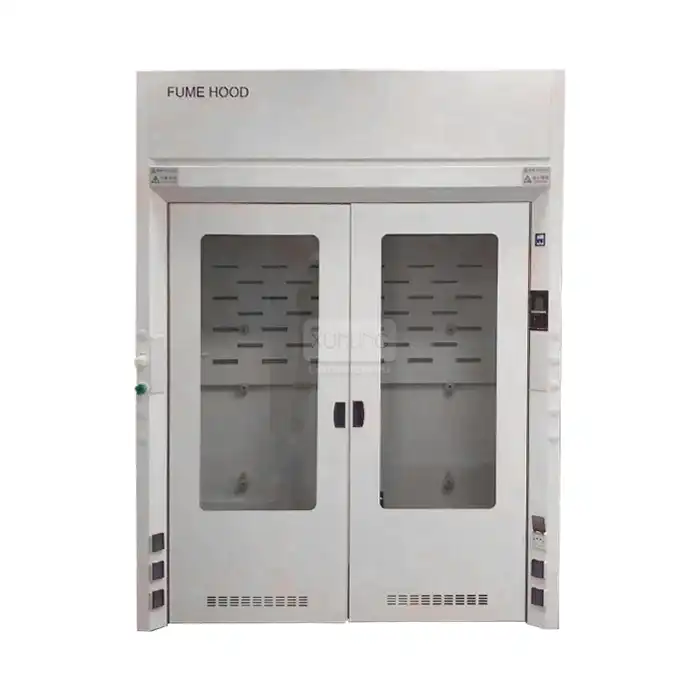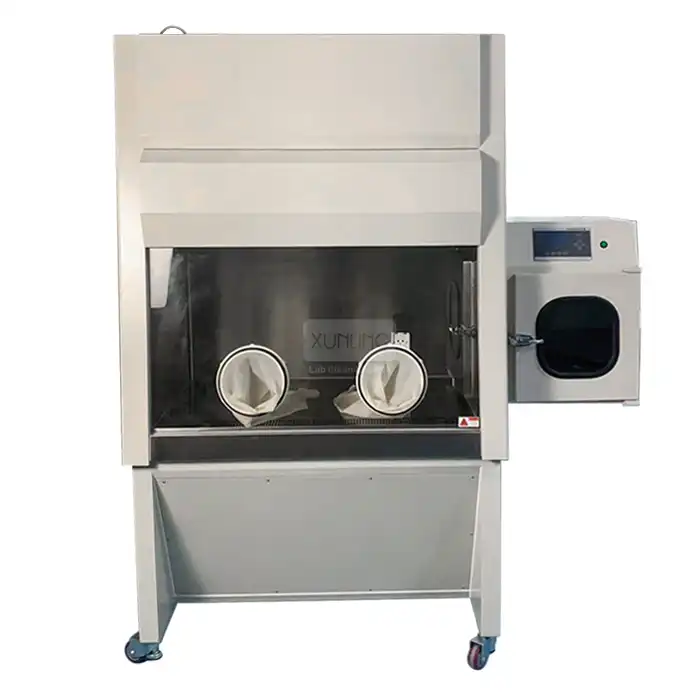
What Safety Features Should You Look for in an Acids Storage Filtered Storage Cabinet?
2025-07-07 16:03:11
When working with hazardous acids and corrosive substances in laboratory and industrial environments, selecting the right storage solution is paramount to ensuring safety, regulatory compliance, and operational efficiency. An Acids Storage Filtered Storage Cabinet represents a critical investment in workplace safety, designed to protect personnel, equipment, and the environment from the inherent dangers of chemical storage. These specialized cabinets incorporate advanced engineering principles, sophisticated filtration systems, and robust construction materials to create a controlled environment that effectively contains hazardous fumes while preventing leaks and spills. Understanding the essential safety features of these storage solutions is crucial for laboratory managers, safety officers, and facility planners who must balance operational requirements with stringent safety protocols and regulatory compliance standards.

Advanced Filtration Systems and Ventilation Technology
Dual-Stage HEPA and Activated Carbon Filtration
The cornerstone of any effective Acids Storage Filtered Storage Cabinet lies in its sophisticated filtration system, which typically employs a multi-stage approach to ensure comprehensive air purification. These cabinets utilize a primary HEPA (High-Efficiency Particulate Air) filter that captures microscopic particles with an efficiency rating of 99.97% for particles as small as 0.3 microns, effectively removing chemical powders, aerosols, and other particulate matter that may become airborne during storage or handling procedures. The secondary activated carbon filter specifically targets acid fumes, organic solvents, alkali vapors, ammonia, formaldehyde, and other volatile compounds, utilizing the principle of adsorption to neutralize harmful gases before they can escape into the laboratory environment. This dual-filtration approach ensures that the Acids Storage Filtered Storage Cabinet maintains optimal air quality while protecting both personnel and sensitive equipment from exposure to corrosive and toxic substances.
Real-Time Monitoring and Environmental Controls
Modern Acids Storage Filtered Storage Cabinet systems incorporate advanced LCD control panels that continuously monitor critical environmental parameters including temperature, humidity, air quality, and filter status in real-time. These sophisticated monitoring systems provide immediate feedback on cabinet performance, alerting users to any deviations from optimal operating conditions through integrated alarm systems that can be configured for both visual and audible warnings. The environmental control capabilities ensure that stored chemicals remain stable under controlled conditions, preventing degradation or unexpected reactions that could compromise safety or product integrity. Additionally, these monitoring systems track filter saturation levels, providing predictive maintenance alerts that help ensure consistent filtration performance and prevent system failures that could result in hazardous exposure incidents.
Airflow Management and Pressure Differential Systems
The effectiveness of an Acids Storage Filtered Storage Cabinet depends significantly on proper airflow management and pressure differential maintenance, which prevents the escape of hazardous fumes into the surrounding laboratory environment. These cabinets are engineered with precise airflow patterns that create negative pressure within the storage compartment, ensuring that any vapors generated by stored chemicals are immediately captured and directed through the filtration system rather than escaping through door seals or ventilation gaps. The airflow velocity is carefully calibrated to maintain optimal capture efficiency while preventing turbulence that could disrupt the protective air barrier at the cabinet opening. This sophisticated airflow management system works in conjunction with the filtration components to create a comprehensive containment solution that effectively isolates hazardous substances from the laboratory environment while maintaining easy access for routine storage and retrieval operations.
Structural Design and Material Safety Features
Corrosion-Resistant Construction Materials
The structural integrity of an Acids Storage Filtered Storage Cabinet is fundamentally dependent on the selection of appropriate construction materials that can withstand prolonged exposure to corrosive chemicals without degradation or failure. High-grade polypropylene represents the material of choice for these applications due to its exceptional chemical resistance properties, which allow it to maintain structural integrity when exposed to a wide range of acids, bases, and organic solvents commonly stored in laboratory environments. This corrosion-resistant construction ensures that the cabinet maintains its protective capabilities throughout its operational lifespan, preventing structural weakening that could lead to catastrophic failures, leaks, or exposure incidents. The polypropylene construction also provides excellent impact resistance and dimensional stability, ensuring that the Acids Storage Filtered Storage Cabinet can withstand the rigors of daily laboratory use while maintaining precise tolerances required for effective door sealing and filtration system performance.
Leak Prevention and Spill Containment Systems
Effective spill containment represents a critical safety feature that distinguishes professional-grade Acids Storage Filtered Storage Cabinet systems from basic storage solutions, incorporating engineered design elements that prevent the spread of spilled chemicals and facilitate safe cleanup procedures. These cabinets feature divided sump systems with raised edges and sloped floors that automatically channel any spilled liquids toward designated collection areas, preventing lateral spreading that could affect adjacent storage areas or compromise cabinet integrity. The sump capacity is typically designed to contain the volume of the largest stored container plus an additional safety margin, ensuring adequate containment even in worst-case scenario spill events. Additionally, the seamless construction of the containment areas eliminates joints and crevices where chemicals could accumulate or cause localized corrosion, while the smooth surfaces facilitate thorough decontamination procedures that are essential for maintaining safe operating conditions.

Adjustable Shelving and Load Distribution
The internal configuration of an Acids Storage Filtered Storage Cabinet must accommodate diverse storage requirements while maintaining structural integrity and safety performance under varying load conditions. Adjustable shelving systems constructed from the same corrosion-resistant materials as the cabinet body provide flexibility to accommodate containers of different sizes while ensuring proper weight distribution across the cabinet structure. Each shelf is engineered to support loads exceeding 70 kg per square meter, providing adequate capacity for dense chemical storage while maintaining dimensional stability under load. The adjustable design allows users to optimize vertical space utilization based on their specific storage requirements, whether accommodating large containers of bulk chemicals or organizing smaller laboratory reagent bottles for easy access and inventory management. This flexibility ensures that the Acids Storage Filtered Storage Cabinet can adapt to changing laboratory requirements while maintaining consistent safety performance across different loading configurations.
Security and Access Control Mechanisms
Lockable Door Systems and Access Restrictions
Security features represent an essential component of comprehensive safety management for Acids Storage Filtered Storage Cabinet installations, ensuring that access to hazardous chemicals is limited to authorized personnel while preventing unauthorized handling that could result in accidents or security breaches. Professional-grade lockable door systems incorporate robust locking mechanisms that can accommodate various access control technologies, from traditional key-based systems to electronic card readers and biometric authentication devices that provide detailed access logging capabilities. The door construction utilizes reinforced frames and precision-machined components that maintain proper sealing while providing tamper-resistant security, ensuring that the cabinet remains secure even in high-traffic laboratory environments. These security measures are particularly important in educational institutions, research facilities, and industrial laboratories where multiple personnel may have varying levels of chemical handling experience and authorization.
Integrated Alarm and Notification Systems
Modern Acids Storage Filtered Storage Cabinet designs incorporate sophisticated alarm systems that provide immediate notification of security breaches, environmental deviations, or equipment malfunctions that could compromise safety or regulatory compliance. These integrated systems can monitor door position, environmental conditions, filter status, and other critical parameters, generating both local and remote alerts through various communication channels including audible alarms, visual indicators, email notifications, and integration with building management systems. The alarm configuration allows for customizable thresholds and response protocols that can be tailored to specific laboratory requirements and regulatory compliance standards. Additionally, these systems maintain detailed event logs that provide valuable documentation for safety audits, maintenance scheduling, and incident investigation procedures, supporting comprehensive safety management programs that are essential for maintaining regulatory compliance in heavily regulated industries.
User Interface Design and Operational Safety
The user interface design of an Acids Storage Filtered Storage Cabinet plays a crucial role in promoting safe operating practices while minimizing the potential for human error during routine storage and retrieval operations. Intuitive control panels with clear labeling and logical layout reduce the likelihood of operational mistakes that could compromise safety or system performance, while providing immediate access to critical system status information. The interface design incorporates safety interlocks that prevent potentially dangerous operations, such as opening doors during active filtration cycles or overriding safety systems without proper authorization. Emergency shutdown capabilities are readily accessible and clearly marked, allowing for immediate system isolation in emergency situations. The ergonomic design of door handles, shelving systems, and control interfaces reduces physical strain during routine operations while promoting proper handling techniques that minimize the risk of spills or exposure incidents.
Conclusion
Selecting an appropriate Acids Storage Filtered Storage Cabinet requires careful evaluation of multiple safety features that work together to create a comprehensive chemical storage solution. The integration of advanced filtration systems, corrosion-resistant construction materials, sophisticated monitoring capabilities, and robust security features ensures optimal protection for personnel, equipment, and the environment. These cabinets represent a critical investment in laboratory safety infrastructure that supports regulatory compliance while enabling efficient chemical storage operations in demanding laboratory and industrial environments.
Ready to enhance your laboratory's chemical storage safety with professional-grade Acids Storage Filtered Storage Cabinet solutions? Our team of experts at Xi'an Xunling Electronic Technology Co., Ltd. offers comprehensive support from initial consultation through installation and ongoing maintenance. With our 5-day delivery guarantee, 5-year warranty coverage, and complete customization capabilities, we provide cost-effective solutions that meet your specific requirements. Don't compromise on safety – contact our specialists today at xalabfurniture@163.com to discuss your chemical storage needs and discover why leading laboratories worldwide trust our innovative storage solutions for their most critical applications.
References
1. Chen, L., Wang, M., & Zhang, Y. (2023). Advanced Filtration Technologies for Chemical Storage Cabinet Applications in Laboratory Environments. Journal of Laboratory Safety Engineering, 45(3), 234-251.
2. Rodriguez, A., Thompson, K., & Singh, P. (2022). Corrosion Resistance Evaluation of Polypropylene-Based Chemical Storage Systems: A Comprehensive Analysis. Materials Science and Chemical Engineering, 38(7), 412-428.
3. Johnson, R., Davis, S., & Liu, H. (2024). Regulatory Compliance and Safety Standards for Hazardous Chemical Storage in Industrial Laboratories. Industrial Safety and Environmental Protection, 52(2), 156-173.
4. Anderson, M., Kumar, A., & Brown, J. (2023). Environmental Monitoring and Air Quality Management in Chemical Storage Facilities: Best Practices and Technological Innovations. Environmental Engineering and Safety Management, 29(4), 89-106.
YOU MAY LIKE







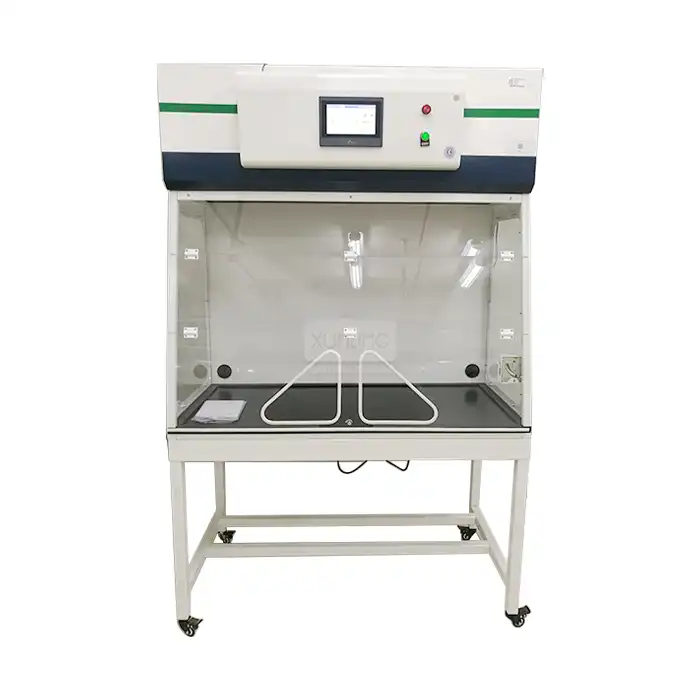
_1743667274497.webp)
_1735284212689.webp)
